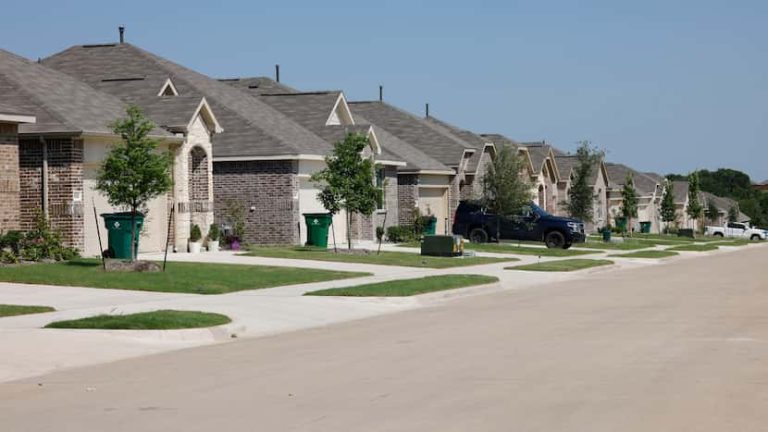Housing supply is increasing in North Texas, with months of housing inventory in the region reaching its highest level in more than a decade.
But that’s not the whole picture.
Buyers are continuing to purchase homes at the same pace as last year. Homes are not staying on the market as long. The selling season is also slowing.
Experts Dallas Morning News Although the situation appears to be improving, the market is out of balance: interest rates are high and affordability remains a concern.
“Supply pressures have eased a bit, but there’s still a long way to go,” said Sriram Villupuram, a professor of finance and real estate at the University of Texas at Arlington. “It’s not enough yet.”
Housing inventory in Dallas-Fort Worth stood at 3.5 months’ worth at the end of May, the highest level since November 2012, according to data from the Texas Real Estate Research Center at Texas A&M University, North Texas Real Estate Information Services and the Metrotex Association of Realtors.
A housing market needs roughly six months of inventory to be considered in balance between buyers and sellers, and this figure tracks the number of months it takes to sell homes currently on the market.
This data comes from the Multiple Listing Service, a private database of properties for sale through real estate brokers.
“It’s hard to say it’s a buyer’s market,” said Metrotex CEO Justin Landon. “In many ways it’s still a seller’s market, with more buyers than homes for sale.”
In May, there were more than 25,900 active listings in the Dallas-Fort Worth area, up 51.4% from the same period last year.
This marks the third consecutive month that the number of active listings has increased by more than 30% year-over-year. Compared to 2023, the number of listings increased by about 46% in April and about 36% in March.
The last time North Texas had this many active MLS listings was in September 2019.
Every county in the Dallas-Fort Worth region saw a surge in listings. Collin County saw more than 4,100 active listings, up about 77% from last May. Dallas County saw 5,567 active listings, up 64.2%.
Median prices and sales will be key numbers to watch in the coming months, as it remains to be seen how the influx of supply will affect these two key metrics.
The median price of a home in the Dallas-Fort Worth area in May was $410,000, up 1.2% from last year. In Dallas County, the median price was $387,000, up 4.6% from a year ago.
Nearly 9,450 sales closed in North Texas, unchanged from May 2023. Sales are a lagging indicator and reflect what was on the market 60 to 90 days prior.
May tends to be the peak selling season, and people looking to sell before the new school year starts are likely already putting their home on the market, Villupuram said.
Even with the increased supply, buyers are still scrambling for homes: In D-FW, homes are staying on the market for an average of 76 days from start to final transaction, one day less than in May 2023.
Several big factors other than supply influence the market.
The biggest factor is interest rates: The average interest rate on a 30-year mortgage in the U.S. was 6.95% in the week ending June 13. In April and May, rates were above 7%.
The Federal Reserve left its key interest rate unchanged last week but cut its forecast for rate cuts to one from three as inflation remains elevated.
Other costs associated with homeownership are also increasing.
According to an analysis by online lending platform LendingTree, home insurance rates in Texas rose 54.5% from 2019 to March 2024. Arizona, Nebraska, Illinois and Utah saw even larger cumulative increases over the same period.
“Housing affordability remains a challenge,” Landon says. “Demand has remained pretty constant. Supply has increased a little bit as sellers are making decisions. And now the question is whether demand will pick up in response. We’ll just have to wait and see what happens with interest rates and everything else.”

